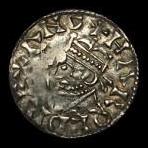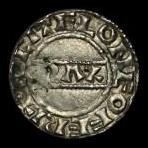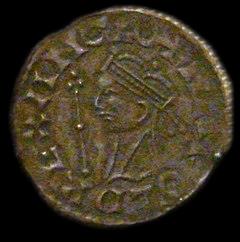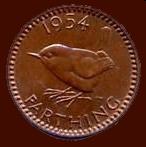








Designed by Nigel G Wilcox






The Paragon Of Metal Detecting
Powered By Sispro1
British Sterling Currency - Numismatics,
Penny
For Reference ONLY
Everything For The Detectorist
Harold II (1066)
Royal Monarchy
Copyright © All Rights Reserved by Nigel G Wilcox · · E-Mail: ngwilcox100@gmail.com
INFORMATION - DATA
Pages
We do NOT buy or sell coins



York, bust left with sceptre, moneyer Iocetel, rev. +?OCITEL ON EOFERI, 1.22g Hammered - Estimated Value £3950 (2018)
Harold II
On 12 September 1066 William's fleet sailed from Normandy. Several ships sank in storms, which forced the fleet to take shelter at Saint-Valery-sur-Somme and to wait for the wind to change. On 27 September the Norman fleet set sail for England, arriving the following day at Pevensey on the coast of East Sussex. Harold's army marched 241 miles (386 kilometres) to intercept William, who had landed perhaps 7,000 men in Sussex, southern England. Harold established his army in hastily built earthworks near Hastings. The two armies clashed at the Battle of Hastings, at Senlac Hill (near the present town of Battle) close by Hastings on 14 October, where after nine hours of hard fighting, Harold was killed and his forces defeated. His brothers Gyrth and Leofwine were also killed in the battle, according to the Anglo-Saxon Chronicle.
The notion that Harold died by an arrow to the eye is a popular belief today, but this historical legend is subject to much scholarly debate. A Norman account of the battle, Carmen de Hastingae Proelio ("Song of the Battle of Hastings"), said to have been written shortly after the battle by Guy, Bishop of Amiens, says that Harold was killed by four knights, probably including Duke William, and his body dismembered. Twelfth-century Anglo-Norman histories, such as William of Malmesbury's Gesta Regum Anglorum and Henry of Huntingdon's Historia Anglorum recount that Harold died by an arrow wound to his head. An earlier source, Amatus of Montecassino's L'Ystoire de li Normant ("History of the Normans"), written only twenty years after the battle of Hastings, contains a report of Harold being shot in the eye with an arrow, but this may be an early fourteenth-century addition. Later accounts reflect one or both of these two versions.
Harold's death depicted in the Bayeux Tapestry, reflecting the tradition that Harold was killed by an arrow in the eye. The annotation above states Harold Rex Interfectus Est, "Harold the King was killed".
A figure in the panel of the Bayeux Tapestry with the inscription "Harold Rex Interfectus Est" ("Harold the King is killed") is depicted gripping an arrow that has struck his eye, but some historians have questioned whether this man is intended to be Harold or if Harold is intended as the next figure lying to the right almost supine, being mutilated beneath a horse's hooves. Etchings made of the Tapestry in the 1730s show the standing figure with differing objects. Benoît's 1729 sketch shows only a dotted line indicating stitch marks without any indication of fletching, whereas all other arrows in the Tapestry are fletched. Bernard de Montfaucon's 1730 engraving has a solid line resembling a spear being held overhand matching the manner of the figure to the left. Stothard's 1819 water-colour drawing has, for the first time, a fletched arrow in the figure's eye. Although not apparent in the earlier depictions, the Tapestry today has stitch marks indicating the fallen figure once had an arrow in its eye. It has been proposed that the second figure once had an arrow added by over-enthusiastic nineteenth-century restorers that was later unstitched. Many believe this, as the name "Harold" is above the figure with an arrow in his eye. This has been disputed by examining other examples from the Tapestry where the visual centre of a scene, not the location of the inscription, identifies named figures. Further evidence is that an arrow volley would be fired before the Norman cavalry charge. A further suggestion is that both accounts are accurate, and that Harold suffered first the eye wound, then the mutilation, and the Tapestry is depicting both in sequence.
* HAROLD II (GODWINSON) (January 6th - October 14th 1066), Penny, 1.28g., Pax or Sole type, Wilton - Ælfweald, crowned bust left holding sceptre, +HAROLD REX ANG, rev., PAX across the field, +ÆLFPOLD ON PILTI,
The notion that Harold died by an arrow to the eye is a popular belief today, but this historical legend is subject to much scholarly debate. A Norman account of the battle, Carmen de Hastingae Proelio ("Song of the Battle of Hastings"), said to have been written shortly after the battle by Guy, Bishop of Amiens, says that Harold was killed by four knights, probably including Duke William, and his body dismembered. Twelfth-century Anglo-Norman histories, such as William of Malmesbury's Gesta Regum Anglorum and Henry of Huntingdon's Historia Anglorum recount that Harold died by an arrow wound to his head. An earlier source, Amatus of Montecassino's L'Ystoire de li Normant ("History of the Normans"), written only twenty years after the battle of Hastings, contains a report of Harold being shot in the eye with an arrow, but this may be an early fourteenth-century addition. Later accounts reflect one or both of these two versions.
Harold's death depicted in the Bayeux Tapestry, reflecting the tradition that Harold was killed by an arrow in the eye. The annotation above states Harold Rex Interfectus Est, "Harold the King was killed".
A figure in the panel of the Bayeux Tapestry with the inscription "Harold Rex Interfectus Est" ("Harold the King is killed") is depicted gripping an arrow that has struck his eye, but some historians have questioned whether this man is intended to be Harold or if Harold is intended as the next figure lying to the right almost supine, being mutilated beneath a horse's hooves. Etchings made of the Tapestry in the 1730s show the standing figure with differing objects. Benoît's 1729 sketch shows only a dotted line indicating stitch marks without any indication of fletching, whereas all other arrows in the Tapestry are fletched. Bernard de Montfaucon's 1730 engraving has a solid line resembling a spear being held overhand matching the manner of the figure to the left. Stothard's 1819 water-colour drawing has, for the first time, a fletched arrow in the figure's eye. Although not apparent in the earlier depictions, the Tapestry today has stitch marks indicating the fallen figure once had an arrow in its eye. It has been proposed that the second figure once had an arrow added by over-enthusiastic nineteenth-century restorers that was later unstitched. Many believe this, as the name "Harold" is above the figure with an arrow in his eye. This has been disputed by examining other examples from the Tapestry where the visual centre of a scene, not the location of the inscription, identifies named figures. Further evidence is that an arrow volley would be fired before the Norman cavalry charge. A further suggestion is that both accounts are accurate, and that Harold suffered first the eye wound, then the mutilation, and the Tapestry is depicting both in sequence.
* HAROLD II (GODWINSON) (January 6th - October 14th 1066), Penny, 1.28g., Pax or Sole type, Wilton - Ælfweald, crowned bust left holding sceptre, +HAROLD REX ANG, rev., PAX across the field, +ÆLFPOLD ON PILTI,

Coin of King Harold Godwinson

Penny
*
Estimated Value: £3,587
Main Coin Menu

Member NCMD
VIEW ALL MENUS
6. S. Menu
























